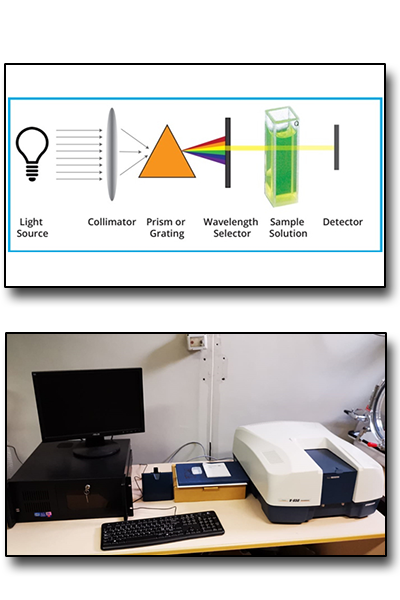UV-VIS spectroscopy is a powerful analytical technique to determine the optical properties (transmittance, reflectance and absorbance) of liquids and solids.
It can be applied to characterize semiconductor materials, coatings, glass and many other research and manufacturing materials. UV-Vis is often called a general technique because most molecules will absorb in the UV-Vis wavelength range. The UV extends from 100–400 nm and the visible spectrum from 400–700 nm.
When a photon hits a molecule and is absorbed, the molecule is promoted into a more excited energetic state. UV-visible light has enough energy to promote electrons to a higher electronic state, from the highest occupied molecular orbital (HOMO) to the lowest unoccupied molecular orbital (LUMO). The energy of the photon must exactly match the band gap for the photon to be absorbed. Thus, molecules with different chemical structures have different energy band gaps and different absorption spectra. The appearance of broad bands or shoulders on the UV-Vis structure is due to the numerous vibrational and rotational states of a molecule, which lead to separate energy band gaps of slightly different energies.


 English (UK)
English (UK)  Italiano (Italia)
Italiano (Italia)